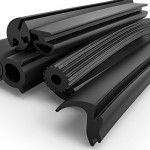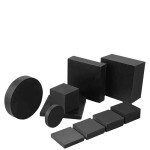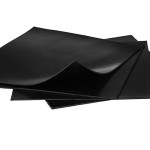| Material: | Silicon |
| Size: | 10mm x 12mm |
| Hardness (Shore A): | 50-75° |
| Minimum length: | 50m |
| Full coil length: | 100m |
| Colour: | Back |
| Estimated delivery: | 8 to 10 working days |
- Stock: In Stock
- Model: RPi10x12 Si
Black Silicone Tubing
Black silicone tubing is a form of silicone material that is black in color, unlike regular silicone which is white. Black silicone tubing typically has good electrical conductivity and a high light absorption capacity, especially in the near to far infrared spectrum. This makes them widely applicable in various fields such as electronics, solar energy, optical sensors, and thermal sensors.
Black silicone tubing is usually created by performing an etching process on the surface of regular silicon. This process creates nanostructures on the surface resembling tree roots, increasing light absorption and reducing reflection. As a result, black silicone tubing has higher optical performance compared to regular white silicon.
Black silicone tubing provides a foundation for developing new applications in the energy and electronics fields and is seen as a potential material in research and future technological applications.
In addition to the previously mentioned applications, black silicone tubing also has other advantages and potentials when applied in scientific and technological fields. Here are some highlights about black silicone tubing:
1. Solar energy applications: Black silicone tubing has a high light absorption capability in the near to far infrared spectrum. This makes them promising materials for enhancing the efficiency of solar energy conversion. Black silicone tubing can be used for solar energy collectors, photovoltaic-thermal (PVT) panels, or photovoltaic-thermal-optical (PV-Thermal) panels, harnessing both light and heat from the environment.
2. Sensor and optical device applications: The good electrical conductivity and high light absorption capacity of black silicone tubing offer potential applications in optical sensors and thermal sensors. With broad light absorption capabilities, they can be used in optical devices such as photodetectors and light sensors.
3. Electronics applications: Black silicone tubing can be used to enhance the performance of electronic devices such as transistors and diodes. This helps enhance the responsiveness and operating speed of electronic devices and can play a significant role in developing compact and high-performance electronic components.
4. Nano-material applications: Black silicone tubing possesses unique nanostructures, resulting in a large surface area and special properties. This opens up potential for their use in the research and development of nano-materials, including nanostructures, nanotubes, and nano-sensor applications.
The nanostructure of black silicone tubing brings many benefits to nano-material research. With a large surface area, they provide a positively interactive environment with other molecules and nanoparticles. This enables enhanced absorption and interaction with various substances, paving the way for high-quality applications such as ultraviolet-blocking thin films, molecular dispersion, and sensor materials.
Black silicone tubing also holds potential for the development of nano-tubes. Black silicon nano-tubes have adjustable diameters, sizes, and electronic properties. They can be used in applications such as nano-circuits, integrated circuits, and optical communication systems. With flexibility and integration capabilities, black silicone tubing can provide advanced solutions for nano-technology and nano-circuitry.
Furthermore, black silicone tubing is also used in nano-sensor applications. With broad light absorption and good electrical conductivity, they can serve as high-quality materials for optical sensors and thermal sensors. Black silicone tubing can play a vital role in developing sensitive and highly accurate sensors for applications in medical, environmental, and industrial fields.
In summary, black silicone tubing is an important and diverse nano-material, offering potential and benefits for nano-material research, nano-tubes, and nano-sensor applications. The combination of the unique properties of black silicone tubing and nano-technology holds promise for advancements in various scientific and technological fields
| Specifications | |
| Thickness | |
| Inner diameter | |
| Outer diameter | |




